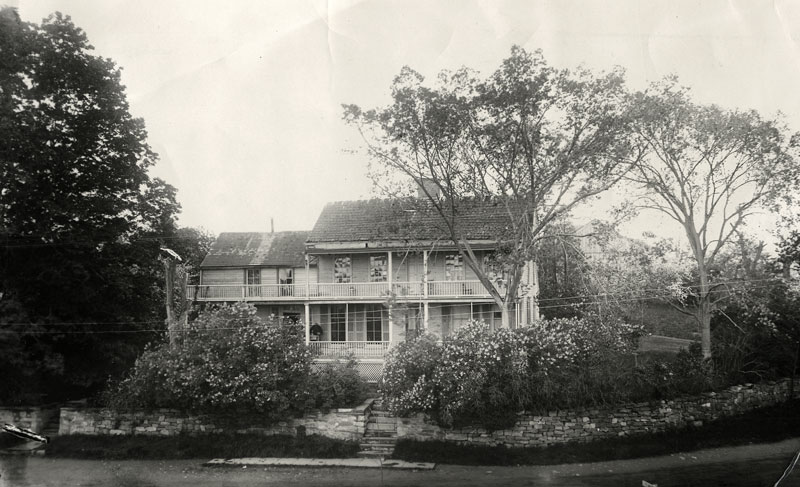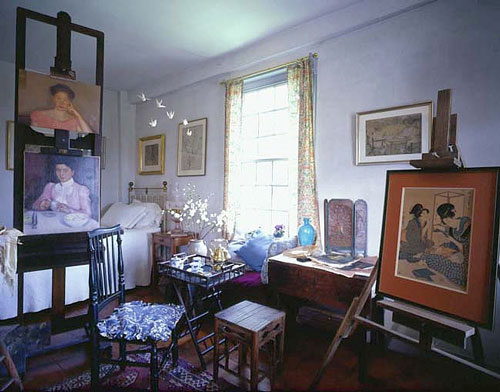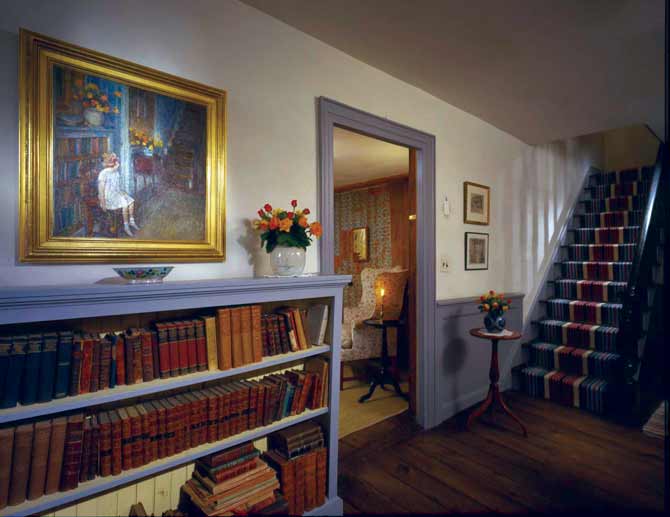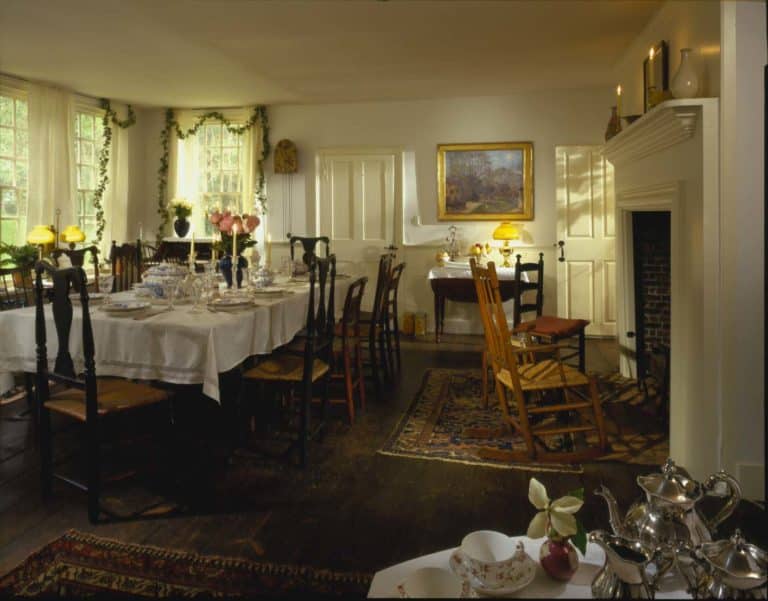Art Colony Rooms
As early as 1870, Greenwich, with its busy harbors, tidal marshes, winding rivers and wooded streams, rocky pastures and stone fences began attracting artists looking for landscapes. Many of these artists painted on the Stanwich Road property owned by Josephine and Edward Holly where they ran the Holley Farm and boarding house.

“First Class Board, large rooms, piazzas, shade, fresh vegetables, milk, one minute from boating, bathing, and fishing…”
Financial problems forced foreclosure of the Holley Farm, and in 1882 the Holleys moved to Cos Cob, an unspoiled, waterfront village on the Lower Landing of the Mianus River. They rented a fourteen-room colonial saltbox house on three-quarters of an acre and soon opened it to summer visitors. Two years later in 1884, they purchased the house. The Holley boarding house offered affordable lodging less than an hour’s train ride from New York City with a short walk from the Cos Cob train station.
The artist John Henry Twachtman met the Holleys while they were living on Holley Farm. In 1890, after securing a teaching position at the Art Students League in New York City and purchasing property on Round Hill Road, Twachtman began offering summer painting classes in Cos Cob to his League students. Here he was able to break from the more traditional teaching methods offered to students at the League and to introduce the theories and methods of Impressionism he had formerly learned working with artists in an informal art colony outside Paris. For artists desiring to leave their studios and paint en plein air like some of the French were now doing, Cos Cob offered a variety of subject material, water, sunlight, old architecture, without having to hike long distances carrying heavy equipment. The Holley house became the center for students seeking summer accommodations.

In 1892 and 1893 Twachtman was joined by his good friend J. Alden Weir as a summer instructor. Among their summer students were Ernest Lawson, Charles Ebert and Mary Brown. Elmer Livingston MacRae joined Twachman’s summer classes in 1896 and continued to study in Cos Cob the following three summers. While boarding at the Holley House, Elmer fell in love with the Holley’s daughter Constant. In 1900 they were married, and he moved into the old house where he continued to live until his death in 1953.
After John Twachtman’s death in 1902, Elmer became the direct link between the Holley House and the artistic community. The Holley House continued to provide a place where artists could gather together for friendship and encouragement. It also offered an opportunity for them to share ideas with novelist, journalist, publishers and performers who gathered at the house.
The International Exhibition of Modern Art (The Armory Show) in 1913 brought new expressions of art to America and changed the direction of American art. Cos Cob’s rich subject matter that attracted the earlier artists no longer appealed to the new generation of artists. After World War I, Cos Cob never regained its vitality as an art colony.
Today the Cos Cob art colony site continues to encourage artists with its Artist-in Residence after-school programs, summer art camps, and Paint on the Lawn program.

Elmer MacRae’s Studio
Elmer Livingstone MacRae was living in New York City when he started taking classes from John Twachtman at the Holley House. MacRae may have had a studio in the Holley House as early as 1899, the year he moved into the house, one year before his marriage to Constant Holley.

Front Hall
Visitors entered through the front hall, whose colonial-era wainscoting “Dutch” door, wide plank flooring, circa 1850 staircase, and eclectic mix of Victorian and colonial furnishings were both charming and, in the case of artist Childe Hassam, ultimately became subject matter. The front hall appears much as it did in 1912 when Childe Hassam painted Clarissa MacRae sitting in front of the bookcase.

Dining Room
The Holley House was known as a place of gracious hospitality. Nowhere is this more apparent than in the dining room, where guests and family gathered for meals each day. Art colonists, their spouses, the Holley’s and MacRae’s, and invited guests gathered around the long table to share their experiences and ideas, an important aspect of art colony life.